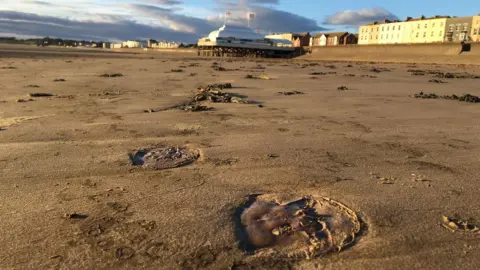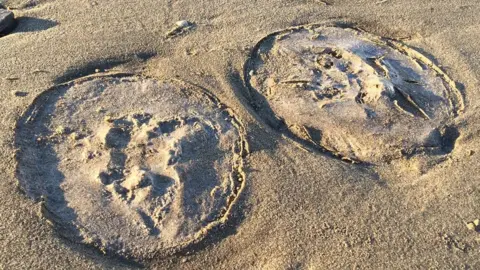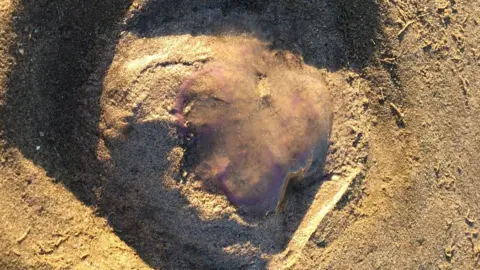Warning as hundreds of jellyfish wash up on Somerset beaches
 BBC
BBCBeachgoers have been told to be careful after hundreds of jellyfish have washed up on shorelines.
Visitors to Burnham-on-Sea, Brean and Berrow sands in Somerset, have been warned to give the barrel and moon jellyfish space as they can give a small sting.
Jolyon Chesworth from Somerset Wildlife Trust said they can be beautiful, but should be admired from afar.
He added that people who get stung should seek medical advice.
"These beachings of large groups of jellyfish are often quite common around this time of year, it probably happens most years in this area," added Mr Chesworth.

He explained as jellyfish "can't control their movements that well they're effectively planktonic and they just go where the wind and the waves and the tides take them".
"This time of year when we often get these south westerlies that groups all the jellyfish together and they tend to get blown up the Severn estuary and up onto shore," he added.
Mr Chesworth said the jellyfish would normally be in deeper waters.

Jellyfish are important in the food chain
- They are eaten by sunfish, the biggest bony fish in the world, which can weigh more than 2.5 tonnes
- Sunfish can be found in the waters off the Somerset coast
- Jellyfish also make up a part of the diet of leatherback turtles, which can be found on the west coast of the UK
- The visual similarity between a jellyfish and plastic bags floating in water is why sunfish and turtles ingest the plastic, with often fatal consequences

Mr Chesworth said although jellyfish "don't have a great reputation, actually a lot of them don't really cause us any aggravation.
"And they are animals, so you don't want to hurt them," he added.
He said: "Moon jellyfish particularly beautiful as they have purpley circles within the bell which are actually reproductive organs, and they're really pretty to look at."


Follow BBC West on Facebook, Twitter and Instagram. Send your story ideas to: [email protected]
